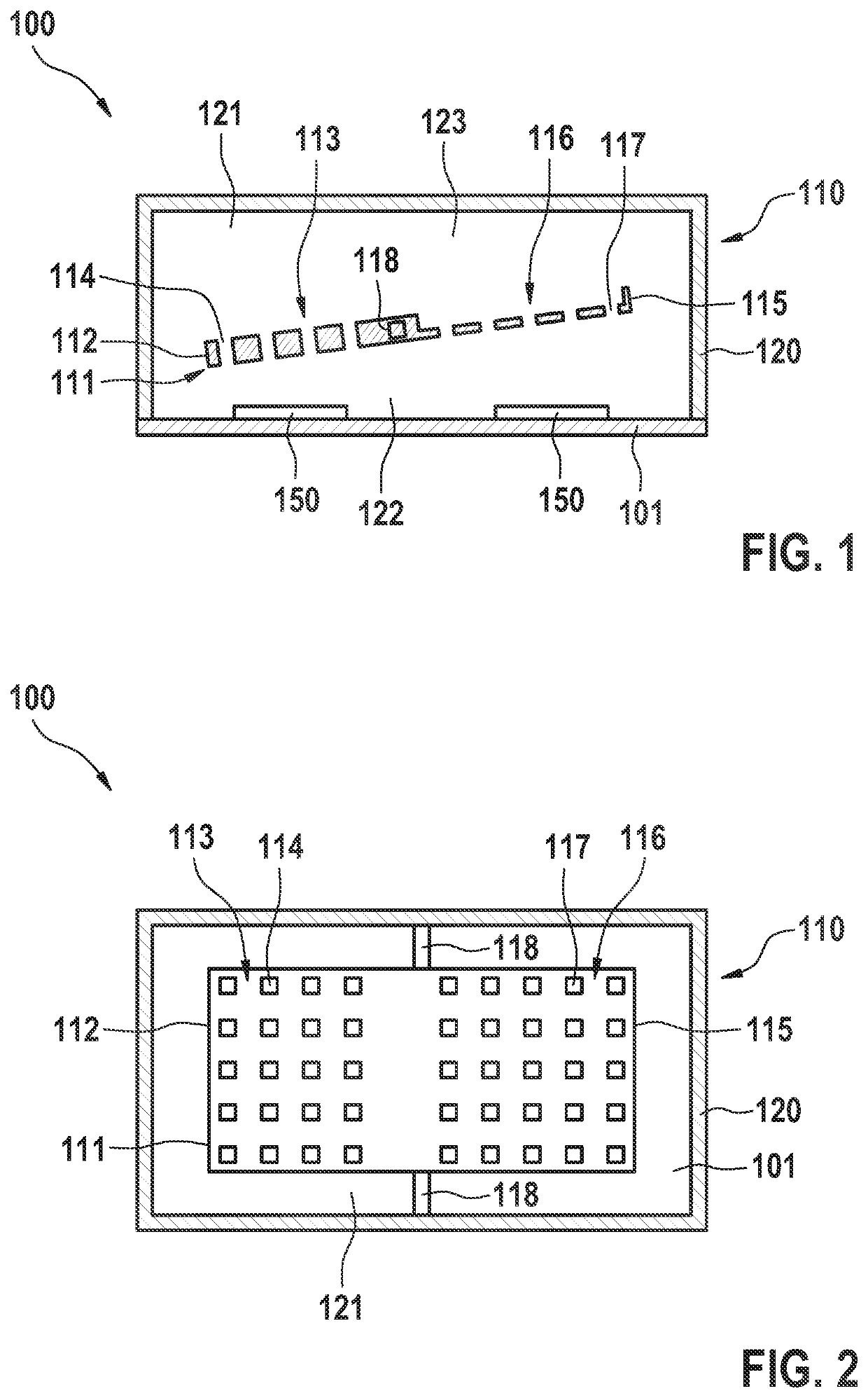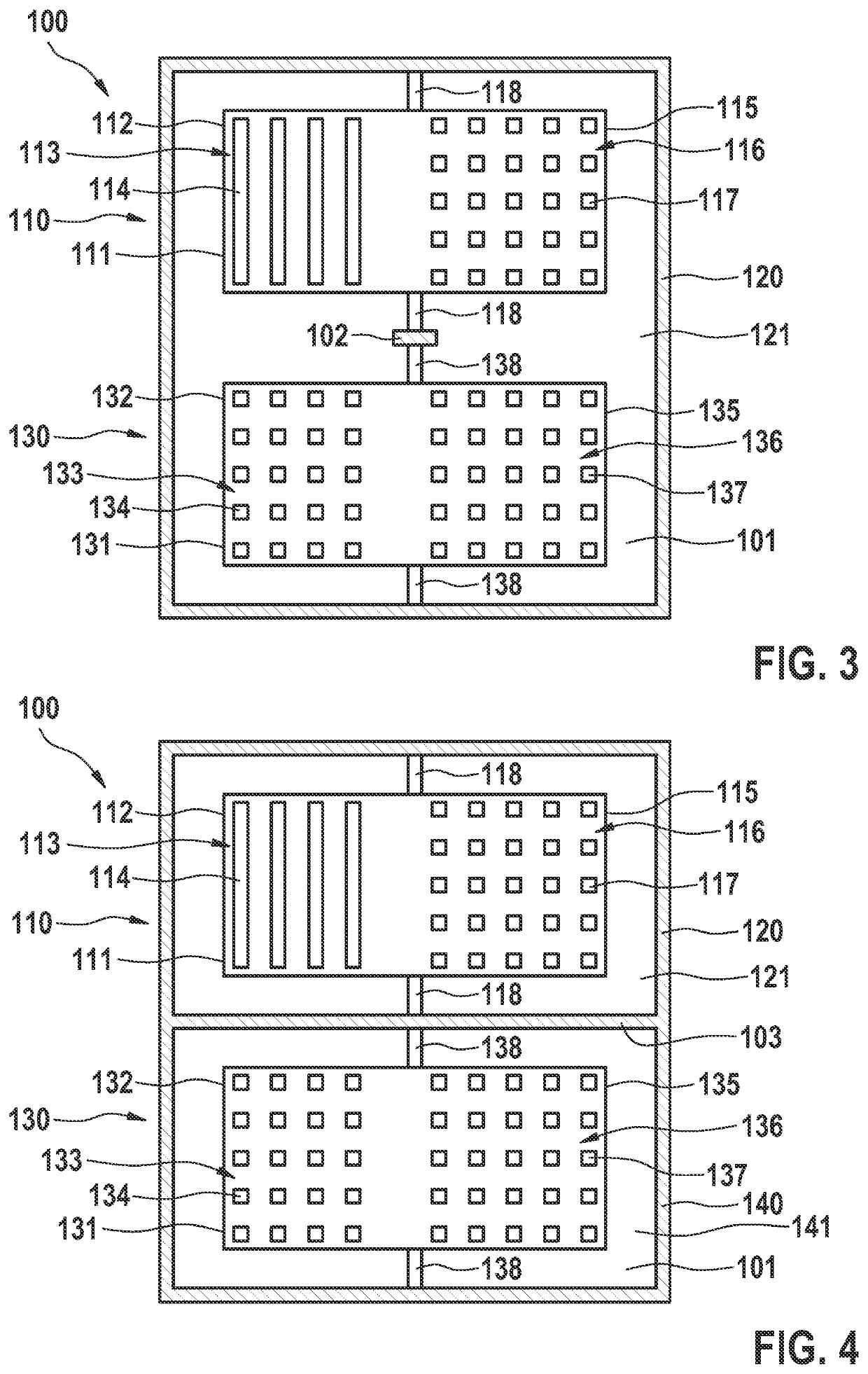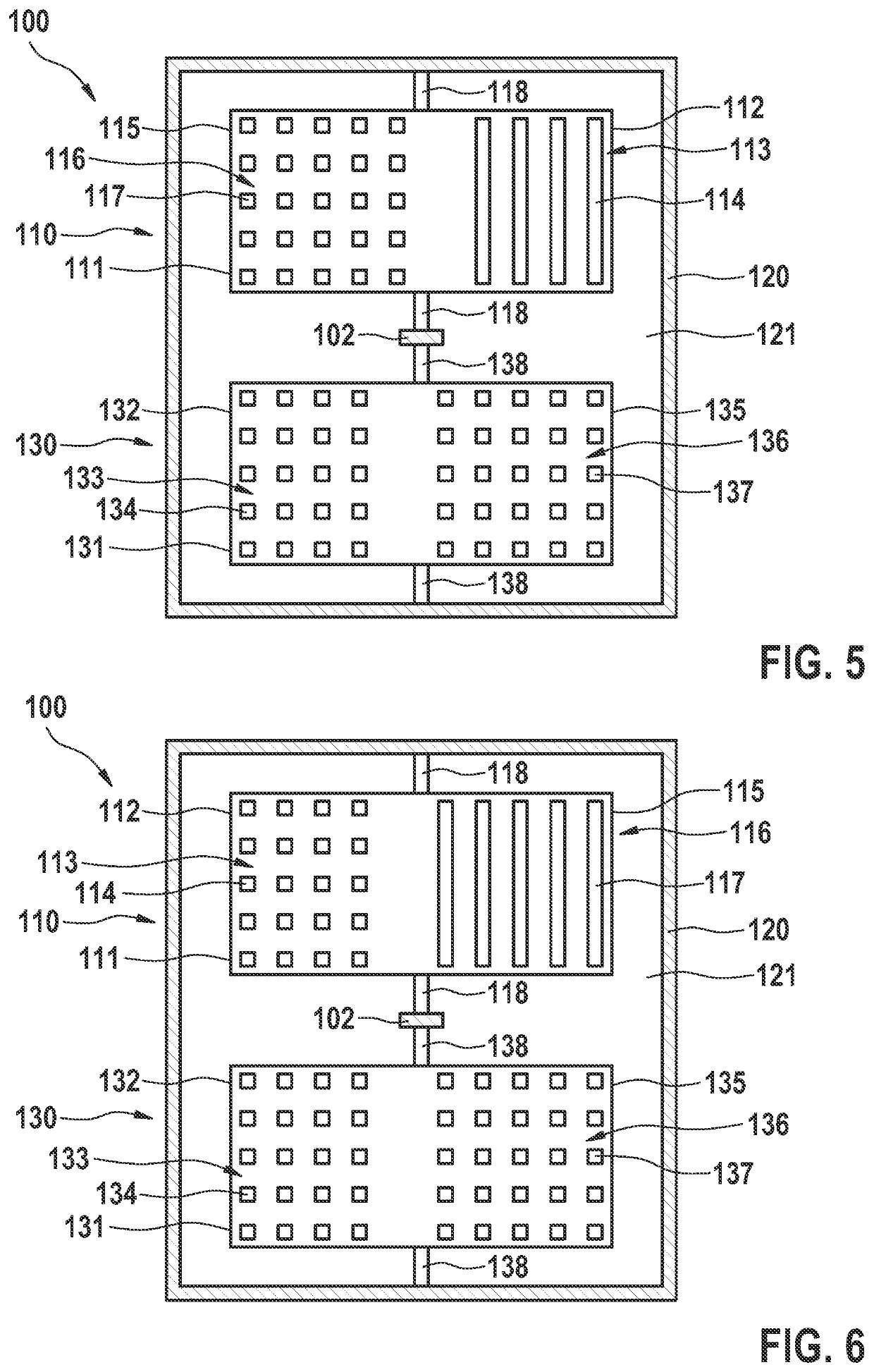Sensor component including a microelectromechanical z inertial sensor and method for ascertaining an acceleration with the aid of the microelectromechanical z inertial sensor
a microelectromechanical and sensor technology, applied in the direction of acceleration measurement using interia forces, fluid speed measurement, instruments, etc., can solve the problems of change in the capacitance of the measuring electrode, unavoidable close arrangement of the components, temporally variable temperature gradients between, etc., to achieve the effect of reducing temperature gradients occurring within a shared cavity and being easy to manufactur
- Summary
- Abstract
- Description
- Claims
- Application Information
AI Technical Summary
Benefits of technology
Problems solved by technology
Method used
Image
Examples
Embodiment Construction
[0026]FIG. 1 shows a microelectromechanical z inertial sensor, including a rocker-shaped MEMS sensor element 110. Sensor element 110, which is situated in a cavity 121 delimited by substrate 101 and a cover-shaped sensor housing 120, includes a seismic mass structure 111, which is anchored on the substrate via one or multiple torsion springs 118 and which is generally created by structuring a function layer situated on a substrate 101. Seismic mass structure 111 has a heavy side 112 and an oppositely situated light side 115 with regard to torsion springs 118. Due to the asymmetrical mass structure distribution resulting therefrom, a deflection of the rocker is effectuated in the presence of an acceleration in the z direction. The deflection of seismic mass structure 111 may be measured capacitively, for example. For this purpose, two electrodes 150 are situated on substrate 101 in FIG. 1, whose electrical potential measurably changes upon a deflection of seismic mass structure 111, ...
PUM
 Login to View More
Login to View More Abstract
Description
Claims
Application Information
 Login to View More
Login to View More - R&D
- Intellectual Property
- Life Sciences
- Materials
- Tech Scout
- Unparalleled Data Quality
- Higher Quality Content
- 60% Fewer Hallucinations
Browse by: Latest US Patents, China's latest patents, Technical Efficacy Thesaurus, Application Domain, Technology Topic, Popular Technical Reports.
© 2025 PatSnap. All rights reserved.Legal|Privacy policy|Modern Slavery Act Transparency Statement|Sitemap|About US| Contact US: help@patsnap.com



